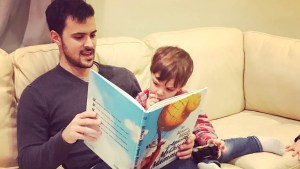Lenten Campaign 2025
This content is free of charge, as are all our articles.
Support us with a donation that is tax-deductible and enable us to continue to reach millions of readers.
Have you ever heard the phrase “moral imagination”? I’d seen it mentioned in Catholic articles, books, and other media, but I was confused.
I get what imagination is, sure. But moral imagination? What on earth is that?
It seemed like everyone knew what it was, so I hesitated to ask. But it kept bugging me that this supposedly important concept was so opaque.
Then I had the good fortune to pick up Tending the Heart of Virtue: How Classic Stories Awaken a Child’s Moral Imagination by Vigen Guroian.
Guroian is a professor of theology and ethics who devoted this book to examining which children’s stories best lend themselves to developing a child’s sense of virtue.
And he sheds light on the moral imagination beautifully.
What is moral imagination?
Let me hand it to Professor Guroian to explain this one:
Mere instruction in morality is not sufficient to nurture the virtues. It might even backfire, especially when the presentation is heavily exhortative and the pupil’s will is coerced. Instead, a compelling vision of the goodness of goodness itself needs to be presented in a way that is attractive and stirs the imagination.
A good moral education addresses both the cognitive and affective dimensions of human nature. Stories are an irreplaceable medium for this kind of moral education—that is, the education of character.
Let’s break down this description a bit. When it comes to moral education, merely telling young people “This is right; this is wrong” is often unconvincing.
Much more effective is showing why right is right and wrong is wrong through stories that bring to life virtues and vices. Such stories and their vivid scenes stick with a person, inspiring them to do good and avoid evil throughout their life.
This creative capacity to envision the consequences of moral decisions is called the moral imagination. And it can be formed and developed through great stories that compel us toward goodness.
5 Stories to awaken the moral imagination
In Tending the Heart of Virtue, Guroian lists 10 books that present a compelling vision of virtue and faith to children. He also includes a number of others in the Conclusion, offering a lengthy reading list that could occupy your family read-aloud time or classroom studies for quite some time.
While you should pick up Guroian’s book to see all 10 books he recommends, I was delighted to see that a number of his top picks have made an appearance at my children’s book club and here on Aleteia. Here are five of his recommended books to form a child’s moral imagination.
1
Pinocchio
Most Americans only know this Italian children’s novel through the maudlin Disney film, but the film’s unfaithfulness to the book obscures the profound Catholic truths hidden in this children’s classic.
Thankfully, this injustice is being righted to some extent by the Well-Read Mom team: They’ve collaborated with Wiseblood Books to publish a new edition of Pinocchio with a commentary by the Italian writer, teacher, and Dante expert Franco Nembrini.
I look forward to reading Pinocchio to my children later this year and enjoying this remarkable story together.
2
The Wind in the Willows
This enchanting British story is hilarious and adventurous enough to engage every child’s interest, and it contains powerful wisdom about our calling to friendship. My children’s book club read it last summer and it was beloved by all.
3
The Lion, the Witch and the Wardrobe
Another book club favorite, C.S. Lewis’ The Lion, the Witch and the Wardrobe is one of the greatest children’s books of all time. It unforgettably brings to life the Gospel story and helps children understand evil and redemption.
4
The Princess and the Goblin
The Princess and the Goblin and its sequel “quietly suggest in every incident ideas of courage and honor.” This book profoundly affected C.S. Lewis and partly inspired his Narnia series. Its heroine is an example of faith and courage, much like Narnia’s Lucy Pevensie.
5
The Velveteen Rabbit
Love, immortality, and self-sacrifice come to life in this moving story of a small stuffed rabbit and his love for a little boy.



